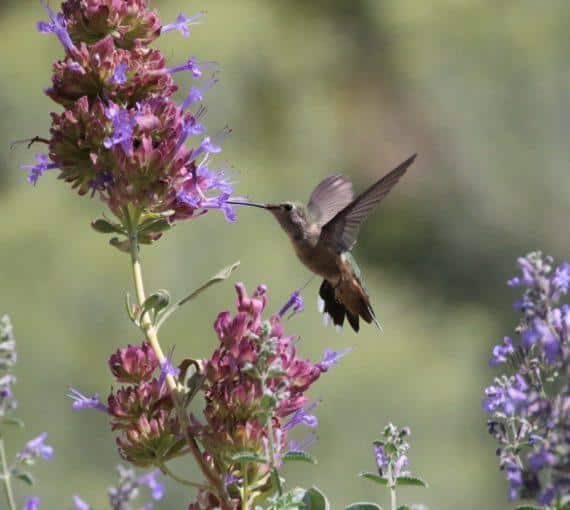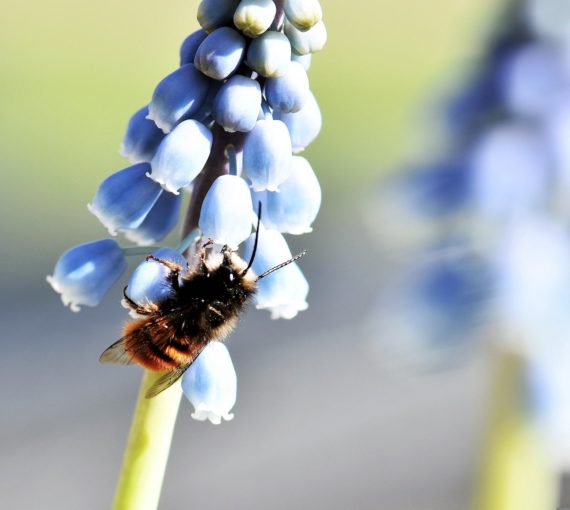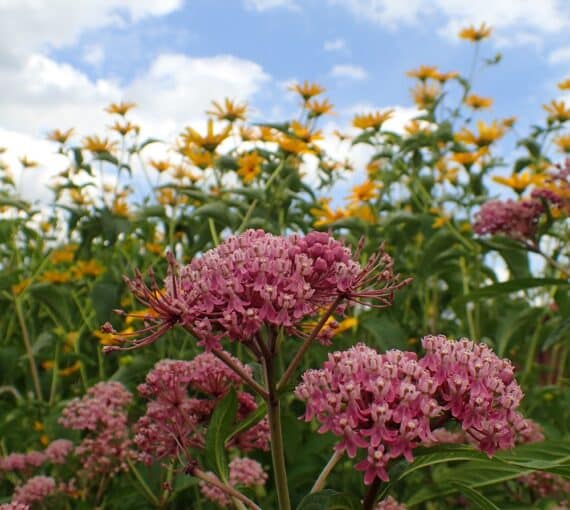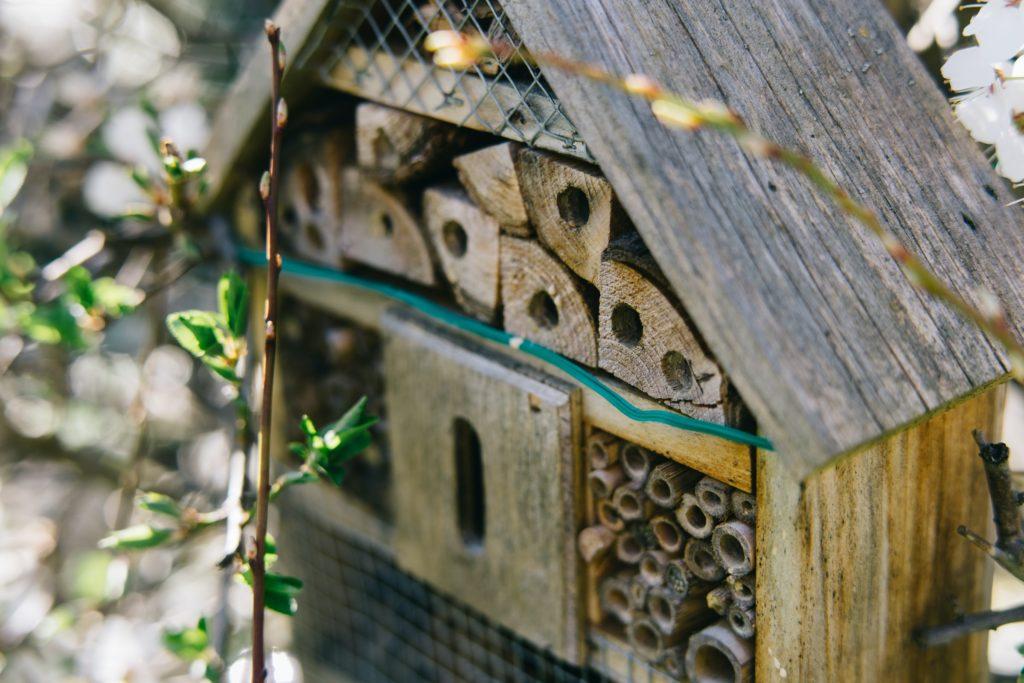
Not all native bee homes are created equal. Learn how to spot the 10 most common mistakes. (Photo: Markus Winkler via Unsplash)
Be certain the bee home you purchase actually helps bees and doesn’t harm them.
Some companies are taking advantage of people’s willingness to help (and spend money) to create a wild bee sanctuary. Unfortunately, some people have unintentionally bought what are referred to as “death traps” when they wanted to help native mason or leafcutter bees.
Inspired by Colin Purrington’s tips. Good houses need:
- The right kind of bee on the label! See a picture of a honeybee? Take that as a clue — the creators are clueless. These homes are for solitary bees like mason and leafcutter bees! Learn how to tell the difference.
- Removable tubes or trays. For example, in October mason bee cocoons need a bath to reduce bee deaths by keeping parasite numbers low and preventing disease spread. If the tubes are glued in, you won’t be able to harvest and clean bee cocoons to increase their chances of survival.
- Nesting tubes that close at one end (at the back of the house). This will stop another access for parasites.
- Nesting tubes about 15 cm long. Anything shorter and you’ll end up with a skewed sex ratio or mostly males. Females are in the deeper chambers. The hole diameter for mason bees should be 0.79 centimetres (or the diameter of an HB pencil).
- No slivers or sharp edges! Check tubes for inside splinters that will damage bee wings and bodies. (When bees emerge in spring, exiting the tubes should not be a death-defying feat!)
- A roof with an overhang. If too much water gets in, it’ll cause mould, as it could in our own homes!
- A solid attachment or mount. Homes should not dangle from a string or wire. Luckily, this is something you can easily fix if the house meets all other criteria.
- Breathable nesting tubes. Avoid glass and plastic straws for nesting tubes. They can mean more condensation and mould. The preference is for paper tubes. Or try natural plant stems (close the end off).
- Instructions. If the home doesn’t come with details about which species it will help, how to hang it and how to care for bees, it may be best to leave it on the shelf. If it does meet the above criteria, check in store if they offer a guide, book or workshop.
- To be alone. Avoid those that look like condos. It just attracts more parasites to one area.
What if you bought the bad house and it appears full of critters? Wait for critters to emerge and clear it out this spring. Then don’t use it again.

Make your own mason bee home
Feeling crafty? Create a safe and cozy bee home with ingredients like craft paper, an HB pencil and an upcycled carton or plastic bottle. (Probably a good time to learn what a mason bee looks like!)
- Use an empty milk carton (waterproof) with the spout cut off — leave the bottom intact — or a box about that size made of wood scraps (not cedar) for the walls. Or, modify a two-litre plastic beverage bottle — cut the neck off at 45 degrees to create an overhang.
- Paint a wooden house a bright colour with exterior zero – or low-VOC (volatile organic compounds) paint. At first, the bees will fly around taking mental “snapshots,” but they’ll soon make a beeline to their new abode.
- Fill the box with layered stacks of brown paper nest tubes, which you can buy at a garden store. Cut the tubes to six inches (15.75 centimetres) long, closing the end with tape or a staple, or fold them in half. Commercial nest tubes are 5/16 of an inch (.79 centimetres) in diameter, the exact size of an HB pencil. Make your own by rolling a piece of brown paper around a pencil, then pinch off the end and seal it with tape. Xerces Society for Invertebrate Conservation shares ways to make tubes.
- Hang the house somewhere out of the rain, facing south or east, at eye level, once the temperature outside has warmed to 12-14 C (54-57 F).
- Dig down below your garden soil next to your bee house until you expose the clay layer or keep a bowl of moist clay near your bee house for the masons to use as construction material.
- If you plan to make more than one bee house, be sure they’re different colours.
It may take a full season for the bees to find your house. If you don’t have any luck attracting locals, buy mason bees from a garden store or beekeeper. Maybe ask your neighbours for a few cleaned cocoons.

How to make a bumblebee nest
Fill a plastic plant pot about two-thirds full of nesting material (dried grass or moss, fine wood chips with (not dryer lint). Tip it upside down and place it at ground level, in a shady area. Place an old plate on top. The plate should weigh enough to hold it in place and leave the air holes in the pot open for ventilation.
Find more bumblebee house instructions, complete with “how to” images, from the Bumblebee Conservation Trust and Garden World.

Build a bug hotel
Bug or insect hotels attract species that pollinate or act as natural pest control. They also provide overwintering habitat. Three ideas:
- Place found materials — twigs, plant stalks and old sunflower heads — inside a reclaimed or repurposed box in your garden.
- Build your own birdhouse-sized insect real estate (and piece of art). Fill it with natural materials like bamboo poles, pencil-sized brown paper tubes, small stones, pine cones and twigs.
- Drill holes into an old log. Vary the size of the holes from half to one centimetre (0.2 to 0.4 inches) in diameter.
Note: Change out nesting materials every year or two to prevent a build up of mould, mites and parasites.
See complete DIY bug hotel instructions with images in Garden Made: A Year of Seasonal Projects to Beautify Your Garden and Your Life by Stephanie Rose or on this website.
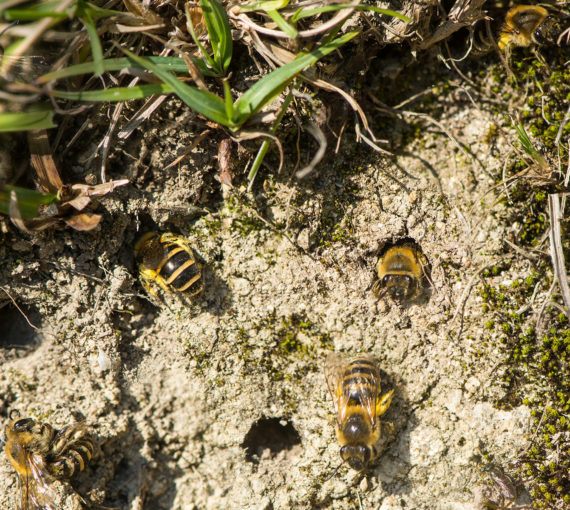
Don’t want the maintenance of a mason bee home? Be a bee-hugger and keep sections of your yard untidy to allow wild bees to build their own homes!

